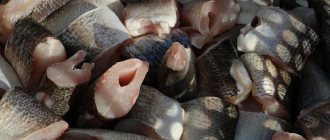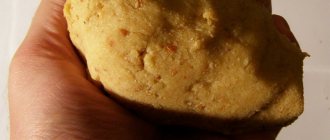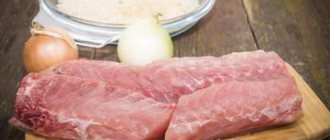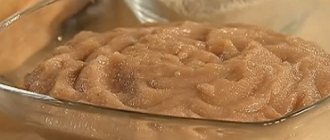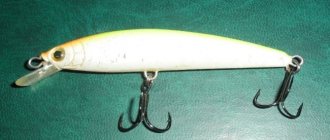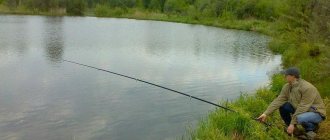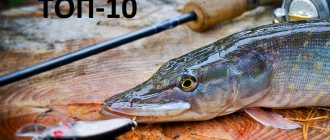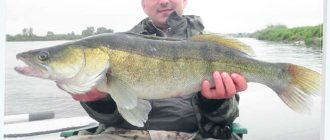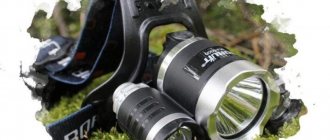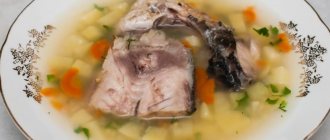Content
- So, the recipe for making mastyrka for crucian carp
- Step-by-step recipe for mastyrka: preparing a crucian carp killer
- Mastyrka using several types of cereals
- Video: Mastyrka recipe from Mikhalych
Catching crucian carp in the summer on a float or feeder is great pleasure and excitement. And there’s no need to talk about the gastronomic qualities of this fish, especially if you cook crucian carp in sour cream in a frying pan.
However, it happens that everything seems to be correct: morning dawn, a proven place, an assortment of bait and a fighting mood, but the float is motionless. How to stir him up? There is one very good way to find the “bite switch” and put it in the “on” position.
Methods of using mastyrka
Almost all non-predatory fish are successfully caught using mastyrka. You can eat porridge as follows:
- As bait for fishing with a fishing rod. Using mastyrka made from semolina and pea flour, it is excellent to catch roach, silver bream, perch, crucian carp, tench and other fish that actively bite on float tackle.
- As bait for the spring on the killer tackle for crucian carp and crucian carp.
- To feed the fishing point, preferably far from the shore. It is very simple to use the product in this way: you need to cut the bait into small pieces and simply throw them into the fishing spot. It is best to use the method in the evening so that the fish gather at night in a certain place in the reservoir, and in the morning they can be actively caught.
So, the recipe for making mastyrka for crucian carp
Before preparing mastyrka, you should decide how you will use it. And there are options, believe me. You either want to make groundbait or bait. And if we are talking about complementary feeding, then decide how you will use it: a float or a feeder.
- Regular groundbait is the easiest to prepare and forgives mistakes, with the exception of a few. For example, if you cook with hot tap water, you risk imparting a bleach smell to the mastyrka, which will negatively affect the efficiency;
- Mastyrka for the spring - in this case you will need a thicker consistency so that the complementary food does not spread during delivery to the bottom and for some time after immersion;
- The attachment on the hook - in this case, the only requirement is that it fits well and holds. That is, a porridge-like consistency is not suitable.
Varieties
Mastyrka can be prepared from peas, potatoes, halva or corn sticks. Each fisherman uses his own secrets of its preparation and special instructions. What kind of mastyrka is best to prepare in this case depends on many factors. For example, pea mastyrka is prepared simply and never fails, and bait made from potatoes and corn is most often used when catching fish of the Carp family. Fish with a sweet tooth prefer to feast on a mixture of halva and peanuts with the addition of sunflower oil.

What are they used for?
Mastyrki are used for various purposes, depending on which they are cooked in different ways.
We recommend that you familiarize yourself with the description and characteristics of sea bream.
Accordingly, the following types are obtained:
- For bait, use balls of uncrushed peas. If fishing is carried out in a reservoir with stagnant water, then add sand to the mass, and if in a current, then clay. Primary feeding is done in large balls, and supplementary feeding is done in small balls. This is the simplest and most common option. Even novice fishermen can handle it. Bream goes for this kind of bait.
- To fill feeders and plugs, a tight fraction is used. They are used when fishing in the bottom layers of a reservoir, including with feeder gear. The bait will hold perfectly in the feeders and attract bream.
- If the mastyrka is used to mask the spring when fishing with Japanese, when preparing it, the water should only lightly cover the peas - it is advisable not to overcook them. This way the consistency will be viscous and not crumbly, which will allow the mass to disintegrate slowly in the water column - within 60 minutes.
- In order for the mastyrka to act as an attachment, it is necessary to cook the pea flour in water without prior preparation until it takes on the appearance of porridge. Then such a dense, plastic and homogeneous mass is placed on a hook.
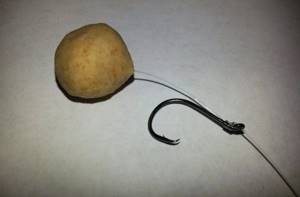
By color
According to this criterion, four types of mastyrka are distinguished:
- Yellow bait is the most popular and easiest to prepare, because there is no need to use additives of other colors, and the mass is colored thanks to the color of peas. Fishermen value it for its catchability. For the bait to be effective, it is necessary to take into account the characteristics of the fishing location.
- Green mastyrka is rarely prepared - it is useful when fishing for large fish in a reservoir with reed thickets and reeds. Using bait of this color will not scare bream.
- The pink color of the bait will be acceptable if fishing is carried out in a small bay or near the bank of a river with a slow current , where threads of water thickets and rare water lilies stretch from the bottom. This bait is very attractive to the fish living in these conditions.
- It is advisable to prepare red dough if you plan to fish on the bottom layer. This kind of bait will be the most suitable, because the fish will quickly notice it.
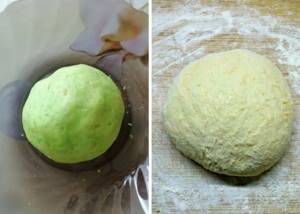
Step-by-step recipe for mastyrka: preparing a crucian carp killer
The ingredients are all available and inexpensive, and what’s best is that you can use different variations of the same peas. If you have dry peas on hand, then you need to soak them for a day; in the case of canned ones, scald them to get rid of excess odors. The easiest way, of course, is to take young peas; they do not require processing and you can immediately start working with such a component.
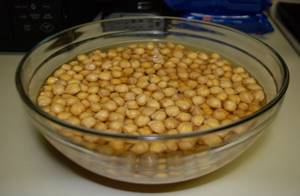
Another important element in the composition of mastyrka is semolina. And the better quality it is, like peas by the way, the more effective the bait will be. At least that's what most experienced fishermen say. You can only check this in practice, through observations and comparisons.
Don’t forget about additives: sunflower cake, honey, vanillin or anise. It should also be taken into account that when it comes to additional components, the principle “the more the better” does not apply. You can overdo it and it will have the opposite effect. Alternatively, you can add an egg to this whole thing to increase the calorie content of the groundbait or bait. If in summer this may not play a significant role, then in winter it is quite a working feature due to problems with the availability of food supply. What can I say, well, the crucian carp wants to have a good meal.
Once all the ingredients are prepared, you need to do the following:
- Place 2 cups of peas in a saucepan and add water so that there is 2-3 cm of liquid on top of our future mastyrka. If you overdo it, you will get bait, but you won’t get bait on a hook or in a spring. Be careful;
- Cook the pea porridge over low heat until tender. Make sure that it does not stick to the bottom of the pan; stir thoroughly;
- Pour 3 cups of semolina into the pan and add enhancers: cake, anise, honey or vanillin. It won’t hurt to add a little flour and don’t skimp on a tablespoon of fragrant vegetable oil;
- Stir everything until smooth.
That's all, the classic mastyrka is almost ready, all that remains is to divide it into small oval-shaped parts, wrap each ball in a damp cloth (so that it does not smell) and freeze it, having previously wrapped the mastyrka with cling film over the cloth. And just before fishing, take out the required amount and simply defrost it, preferably in the refrigerator. On a pond, do not throw the mastyrka in the sun, use shade to maintain density.
Tips from experienced anglers
Tips and recommendations from experienced fishermen that will allow you to use makukha, mastyrka, chatterbox and other considered baits most effectively:
- The recipe can be changed at your discretion by adding additional components with a pleasant smell for production to the mixture; their range is very wide. The choice of such an additive depends on the preferences of the prey and the time of year, while the same type of fish in different bodies of water may prefer different aromas, so there are no universal recipes suitable for every fishing trip.
- The volume of aromatic additives is selected depending on the bulk. You should be guided by the rule that it is better not to add flavorings than to add them, since a too strong and pungent smell has a deterrent effect on fish.
- It is best to catch crucian carp and carp on the top . The aroma of sunflower seeds and peas also attracts carp, but in the case of them, preliminary feeding of the place is required. You can use macadamia as a bait mixture, but choose another bait option, for example, maggots, earthworms or special boilies.
- When using makukha as bait rather than a feeding mixture, it is most convenient to use gear specially designed for this purpose - a makushatnik.
- Any of the types of bait discussed in the article should be prepared immediately before fishing, since such mixtures spoil very quickly. The first signs of their unsuitability may be invisible to humans, but fish have a heightened sense of smell, so using spoiled bait will negatively affect fishing productivity.
- Even in cases where there have been no bites for a long time and the bait on the hook is in good condition, it should be changed at least once an hour.
fastcarp.ru
Mastyrka using several types of cereals
The classic version is good, no matter how you look at it. However, there is another recipe that is also effective, and sometimes even a reliable safety net. So don’t be lazy and prepare assorted mastyrka to be fully prepared.
Cook 2 cups of peas according to the same principle as in the previous version. Separately, cook half a glass of semolina, millet and pearl barley. When ready, it is advisable to grind the whole thing through a sieve to bring it to a homogeneous mass. Next, we saturate our mastyrka with additives and freeze it. If it turns out a little liquid, don’t be upset, just add flour a little to achieve the desired viscosity.
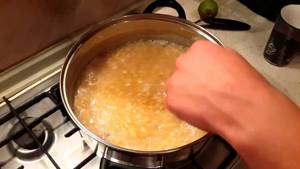
Important points to note:
- Mastyrka, first of all, should smell like pea porridge, and not semolina, which mainly acts as a connecting link that imparts viscosity;
- Better thicker than thinner. And this is a very logical remark, because it is always easier to soak mastyrka than to make it more viscous. Dancing with a tambourine and flour, of course, can help in this situation, but all this is precious time, which is not available when fishing, especially at dawn;
- A pan with an anti-oxidation coating is ideal for preparing mastyrka. And when soaking peas, it is important that they are not in a hot room at this time. It might ferment.
Video: Mastyrka recipe from Mikhalych
Surely many who like to catch peaceful fish have at least once heard about the famous mastyrka recipe from Mikhalych. We suggest you check it in practice to see how truly killer this thing is, and then tell you in the comments to this article.
Fortunately, you can spend one evening preparing two or three types of mastyrok: classic, assorted, according to Mikhalych’s recipe. Freeze the whole thing and use it all season, taking a little out of the refrigerator each time. As they say: “cheap, practical and convenient,” and most importantly, also effective. And here’s another question: who uses what dyes and flavorings for mastyrka? Let's share our recipes!
